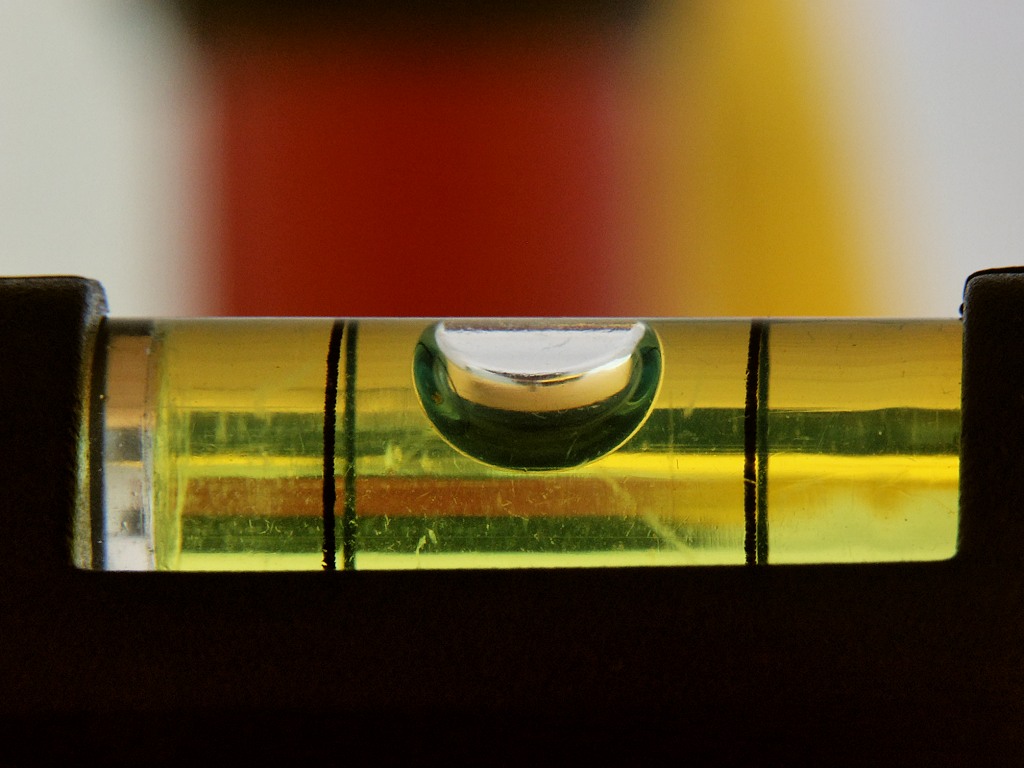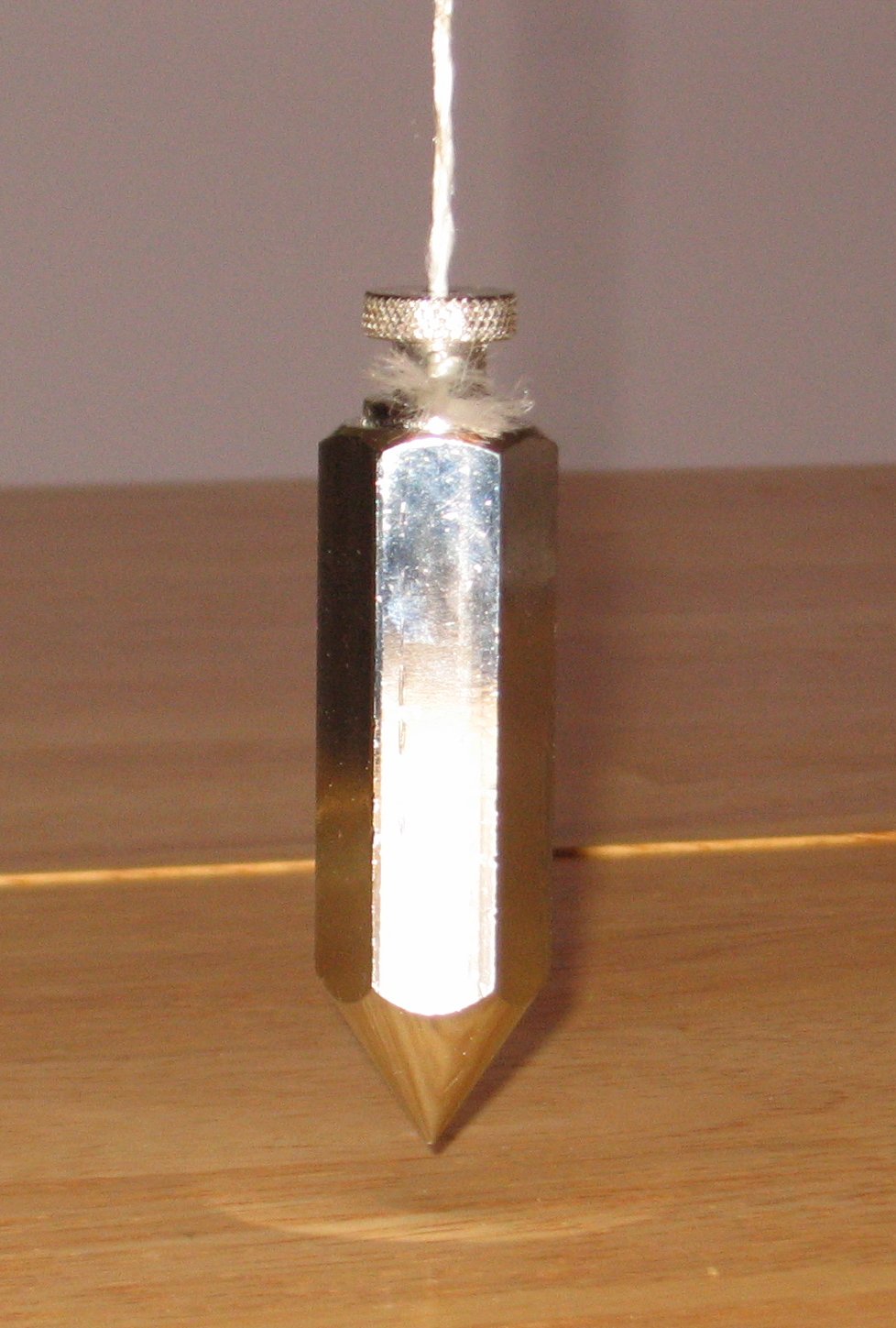|
Archipendulum
The archipendulum is an ancient ancestor of the spirit level and astrolabe, and was used to check whether a line was horizontal or at a desired inclination. It consisted of a handheld A-shaped construction with a plumbline suspended from the top vertex. The horizontal bar of the A was marked at its midpoint, so that the plumbline's coincidence with this point indicated that the bases of the two legs were at the same level. Other gradations on the horizontal bar enabled the user to construct or verify inclined lines. The same methods of use apply to the inverted 'T' which is simply another variant of the archipendulum. Used by the builders of the Egyptian pyramids The Egyptian pyramids are ancient masonry structures located in Egypt. Sources cite at least 118 identified "Egyptian" pyramids. Approximately 80 pyramids were built within the Kingdom of Kush, now located in the modern country of Sudan. Of ... and from the Indian subcontinent, it was more recently described by ... [...More Info...] [...Related Items...] OR: [Wikipedia] [Google] [Baidu] |
Archipendulum (Triumph Of The Republic), 2009-08-29
The archipendulum is an ancient ancestor of the spirit level and astrolabe, and was used to check whether a line was horizontal or at a desired inclination. It consisted of a handheld A-shaped construction with a plumbline suspended from the top vertex. The horizontal bar of the A was marked at its midpoint, so that the plumbline's coincidence with this point indicated that the bases of the two legs were at the same level. Other gradations on the horizontal bar enabled the user to construct or verify inclined lines. The same methods of use apply to the inverted 'T' which is simply another variant of the archipendulum. Used by the builders of the Egyptian pyramids and from the Indian subcontinent, it was more recently described by Johann Heinrich Alsted and Leon Battista Alberti. External linksBuilding the Pyramids References {{reflist Inclinometers ... [...More Info...] [...Related Items...] OR: [Wikipedia] [Google] [Baidu] |
L' Inde Française24
L' (L + apostrophe), or Lʼ (L + modifier apostrophe) may represent: * an abbreviated form of a French definite article * the compose key sequence for Ĺ (L + acute accent) * palatalised ''l'', in Slavic notation It looks similar to: * Ľ (L + caron), a letter used in the Slovak alphabet and in some versions of the Ukrainian Latin alphabet * ɬʼ, the International Phonetic Alphabet symbol for the alveolar lateral ejective fricative * L′ (''L'' + prime A prime number (or a prime) is a natural number greater than 1 that is not a product of two smaller natural numbers. A natural number greater than 1 that is not prime is called a composite number. For example, 5 is prime because the only ways ...) * Lʻ (''L'' + ʻokina) * Lʾ (''L'' + right half ring) * Lʿ (''L'' + left half ring) {{disambiguation ... [...More Info...] [...Related Items...] OR: [Wikipedia] [Google] [Baidu] |
Spirit Level
A spirit level, bubble level, or simply a level, is an instrument designed to indicate whether a surface is horizontal (level) or vertical ( plumb). Different types of spirit levels may be used by carpenters, stonemasons, bricklayers, other building trades workers, surveyors, millwrights and other metalworkers, and in some photographic or videographic work. Construction Early tubular spirit levels had very slightly curved glass vials with constant inner diameter at each viewing point. These vials are incompletely filled with a liquid, usually a colored spirit or alcohol, leaving a bubble in the tube. They have a slight upward curve, so that the bubble naturally rests in the center, the highest point. At slight inclinations the bubble travels away from the marked center position. Where a spirit level must also be usable upside-down or on its side, the curved constant-diameter tube is replaced by an uncurved barrel-shaped tube with a slightly larger diameter in its ... [...More Info...] [...Related Items...] OR: [Wikipedia] [Google] [Baidu] |
Astrolabe
An astrolabe ( grc, ἀστρολάβος ; ar, ٱلأَسْطُرلاب ; persian, ستارهیاب ) is an ancient astronomical instrument that was a handheld model of the universe. Its various functions also make it an elaborate inclinometer and an analog calculation device capable of working out several kinds of problems in astronomy. In its simplest form it is a metal disc with a pattern of wires, cutouts, and perforations that allows a user to calculate astronomical positions precisely. Historically used by astronomers, it is able to measure the altitude above the horizon of a celestial body, day or night; it can be used to identify stars or planets, to determine local latitude given local time (and vice versa), to survey, or to triangulate. It was used in classical antiquity, the Islamic Golden Age, the European Middle Ages and the Age of Discovery for all these purposes. The astrolabe's importance comes not only from the early developments into the study of astron ... [...More Info...] [...Related Items...] OR: [Wikipedia] [Google] [Baidu] |
Plumbline
A plumb bob, plumb bob level, or plummet, is a weight, usually with a pointed tip on the bottom, suspended from a string and used as a vertical reference line, or plumb-line. It is a precursor to the spirit level and used to establish a vertical datum. It is typically made of stone, wood, or lead, but can also be made of other metals. If it is used for decoration, it may be made of bone or ivory. The instrument has been used since at least the time of ancient EgyptDenys A. Stocks. Experiments in Egyptian archaeology: stoneworking technology in ncient Egypt'. Routledge; 2003. . p. 180. to ensure that constructions are "plumb", or vertical. It is also used in surveying, to establish the nadir with respect to gravity of a point in space. It is used with a variety of instruments (including levels, theodolites, and steel tapes) to set the instrument exactly over a fixed survey marker or to transcribe positions onto the ground for placing a marker. Etymology The ''pl ... [...More Info...] [...Related Items...] OR: [Wikipedia] [Google] [Baidu] |
Egyptian Pyramids
The Egyptian pyramids are ancient masonry structures located in Egypt. Sources cite at least 118 identified "Egyptian" pyramids. Approximately 80 pyramids were built within the Kingdom of Kush, now located in the modern country of Sudan. Of those located in modern Egypt, most were built as tombs for the country's pharaohs and their consorts during the Old and Middle Kingdom periods. The earliest known Egyptian pyramids are found at Saqqara, northwest of Memphis, although at least one step-pyramid-like structure has been found at Saqqara, dating to the First Dynasty: Mastaba 3808, which has been attributed to the reign of Pharaoh Anedjib, with inscriptions, and other archaeological remains of the period, suggesting there may have been others. The otherwise earliest among these is the Pyramid of Djoser built during the Third Dynasty. This pyramid and its surrounding complex are generally considered to be the world's oldest monumental structures constructed of dress ... [...More Info...] [...Related Items...] OR: [Wikipedia] [Google] [Baidu] |
Johann Heinrich Alsted
Johann Heinrich Alsted (March 1588 – November 9, 1638), "the true parent of all the Encyclopædias", s:Budget of Paradoxes/O. was a German-born Transylvanian Saxon Calvinist minister and academic, known for his varied interests: in Ramism and Lullism, pedagogy and encyclopedias, theology and millenarianism. His contemporaries noted that an anagram of Alstedius was ''sedulitas'', meaning "hard work" in Latin. Life Alsted was born in Mittenaar. He was educated at Herborn Academy in the state of Hesse, studying under Johannes Piscator. From 1606 he was at the University of Marburg, taught by Rudolf Goclenius, Gregorius Schönfeld and Raphaël Egli. The following year he went to Basel, where his teachers were Leonhardt Zubler for mathematics, Amandus Polanus von Polansdorf for theology, and Johann Buxtorf. From about 1608 he returned to the Herborn Academy to teach as professor of philosophy and theology. [...More Info...] [...Related Items...] OR: [Wikipedia] [Google] [Baidu] |
Leon Battista Alberti
Leon Battista Alberti (; 14 February 1404 – 25 April 1472) was an Italian Renaissance humanist author, artist, architect, poet, priest, linguist, philosopher, and cryptographer; he epitomised the nature of those identified now as polymaths. He is considered the founder of Western cryptography, a claim he shares with Johannes Trithemius. Although he often is characterized exclusively as an architect, as James Beck has observed, "to single out one of Leon Battista's 'fields' over others as somehow functionally independent and self-sufficient is of no help at all to any effort to characterize Alberti's extensive explorations in the fine arts". Although Alberti is known mostly for being an artist, he was also a mathematician of many sorts and made great advances to this field during the fifteenth century. The two most important buildings he designed are the churches of San Sebastiano (1460) and Sant'Andrea (1472), both in Mantua. Alberti's life was described in Giorgio Vasari's ' ... [...More Info...] [...Related Items...] OR: [Wikipedia] [Google] [Baidu] |





